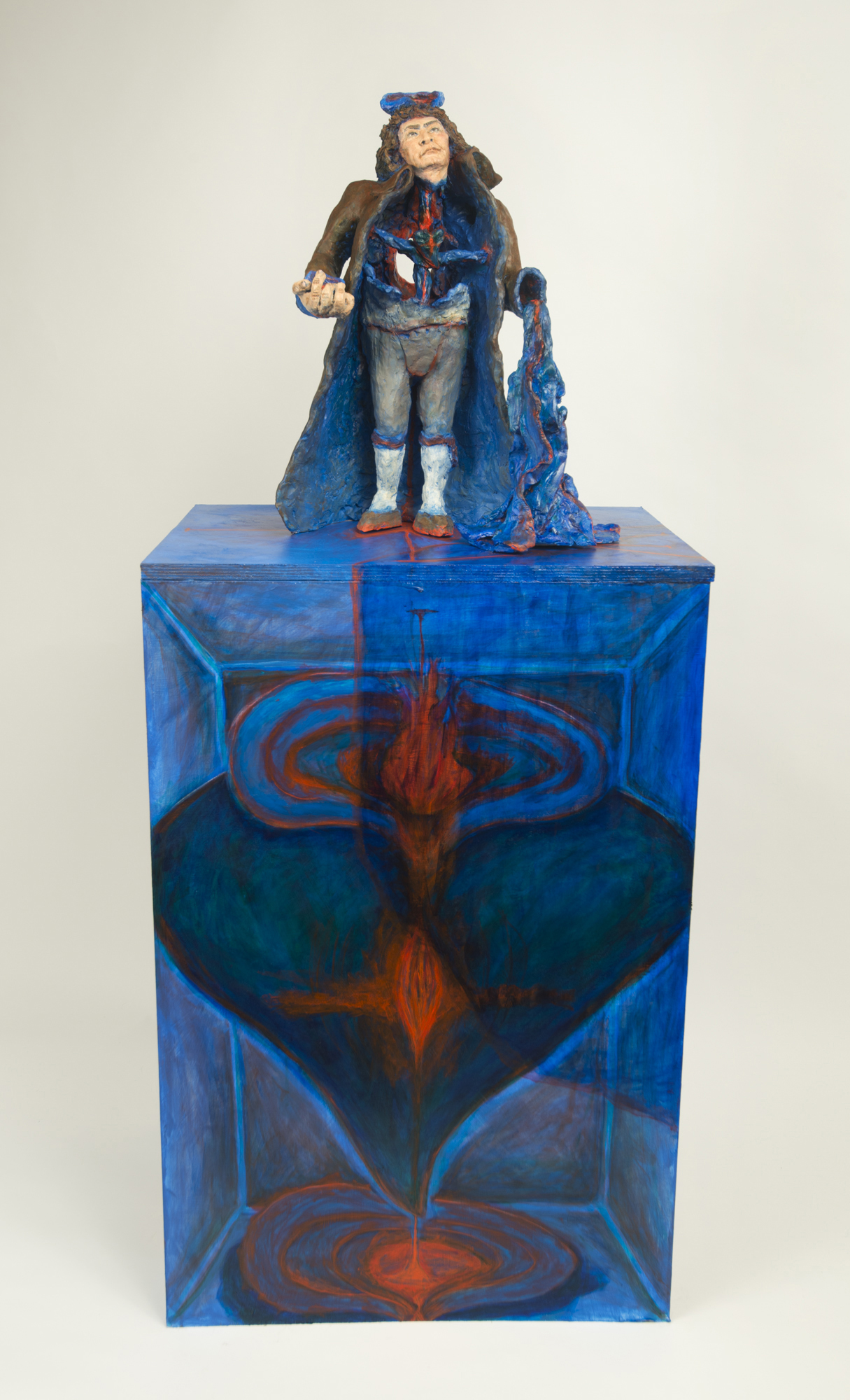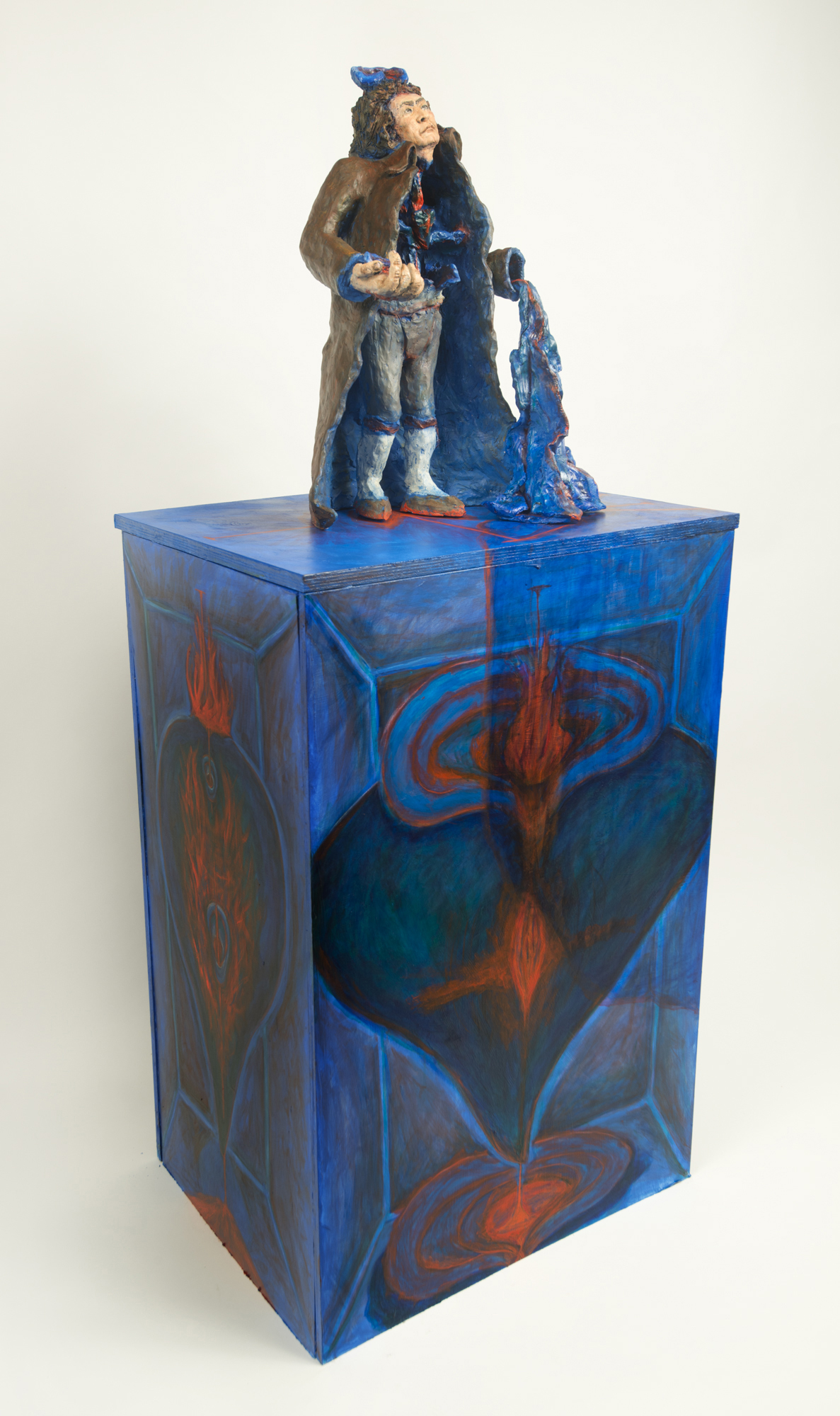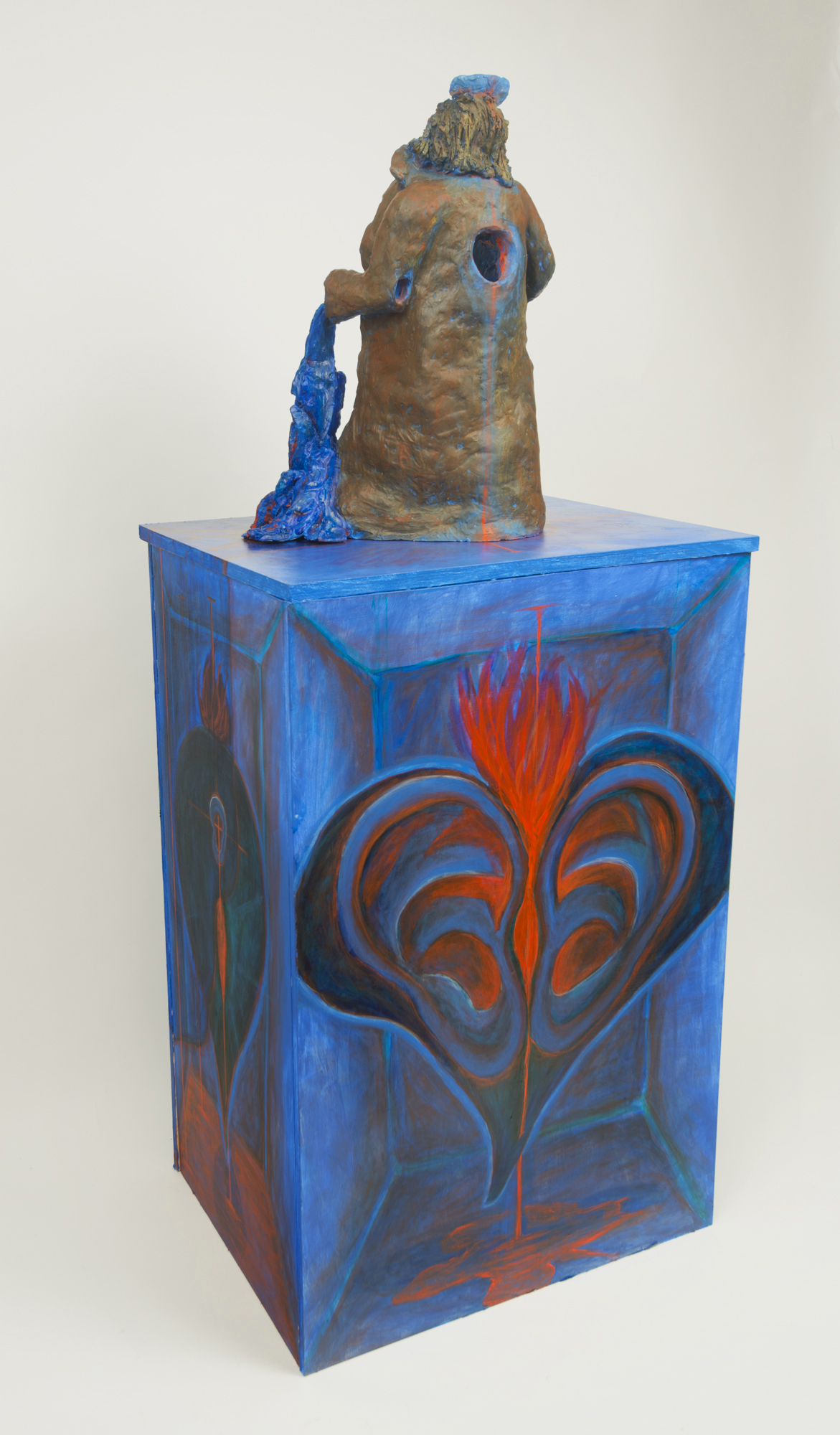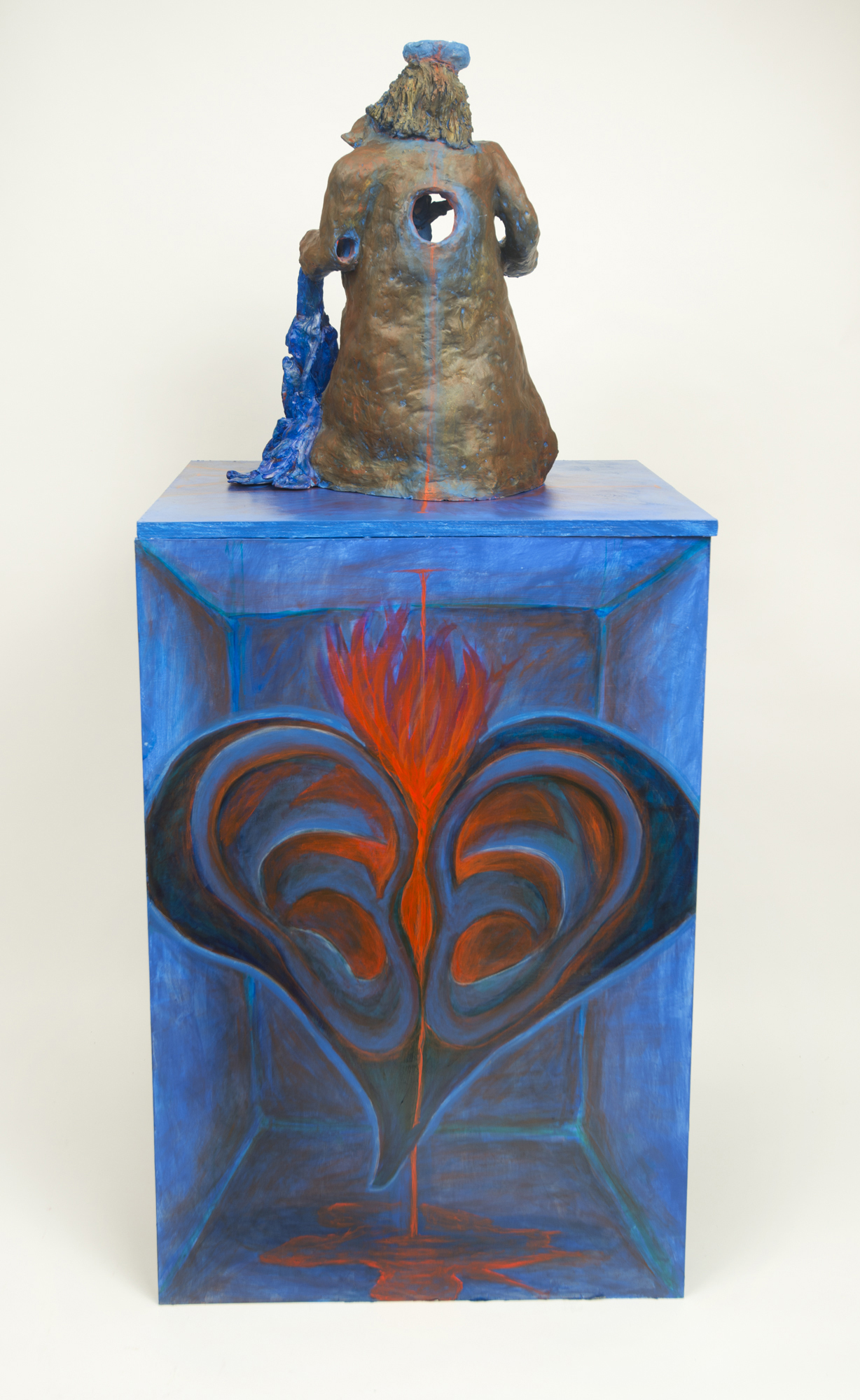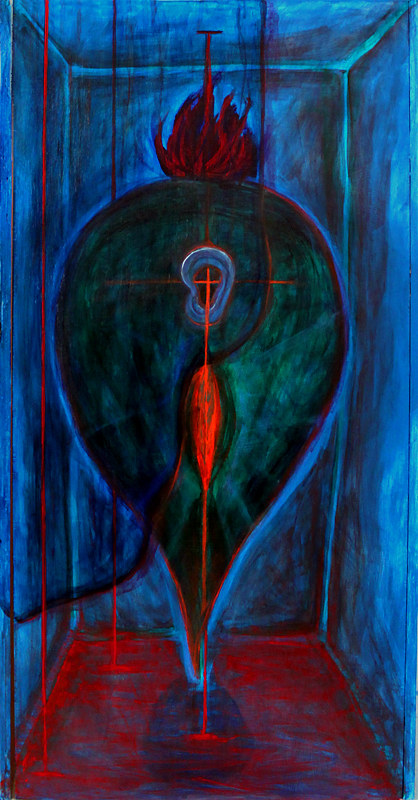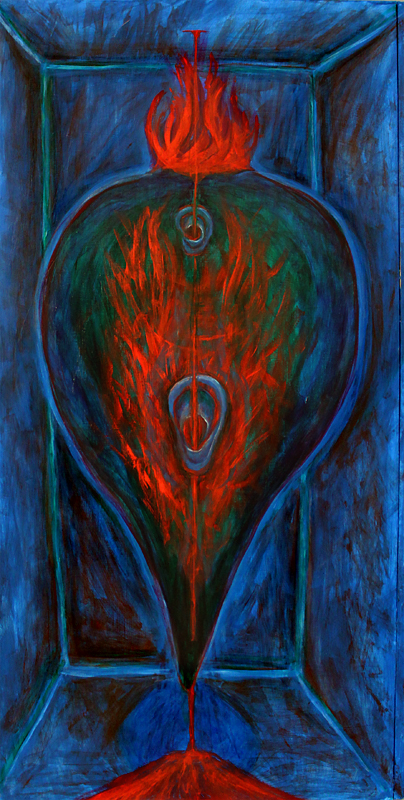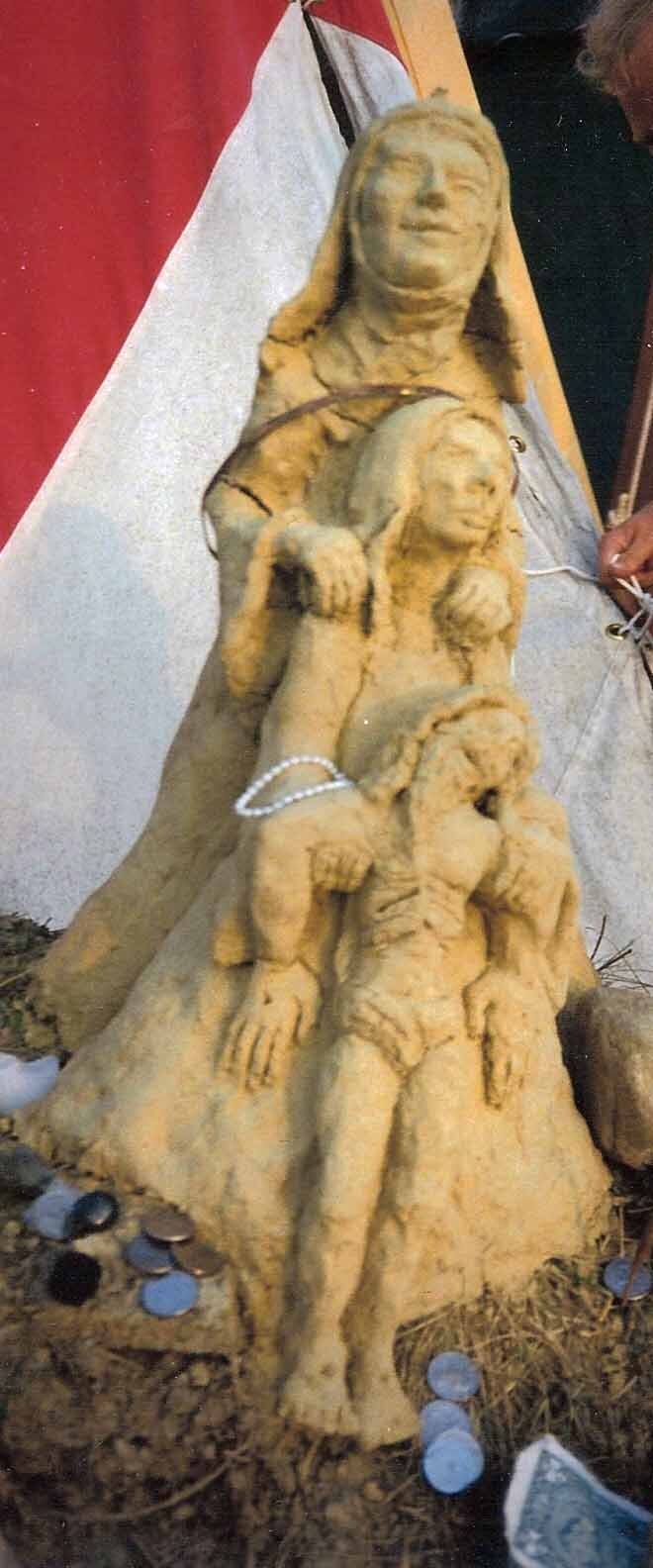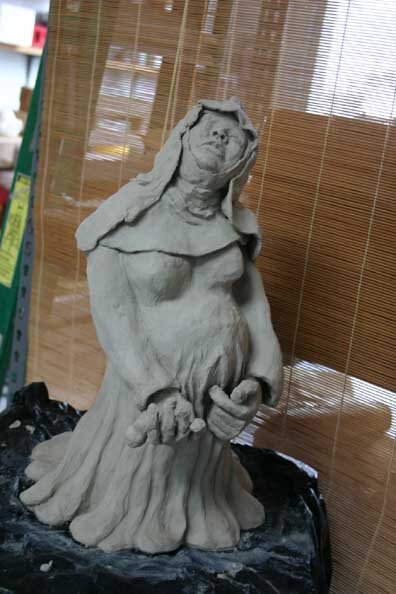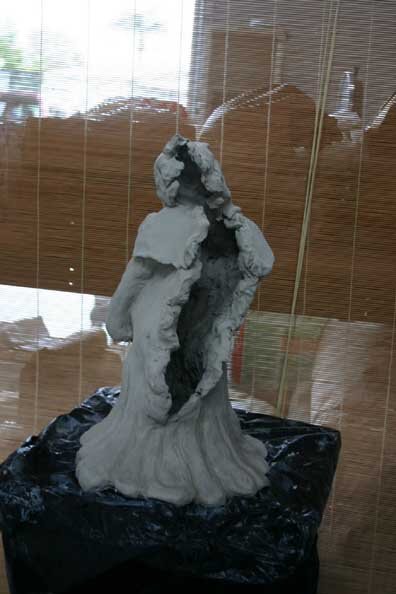Below is a new video interview about the meaning behind my work. I hope you enjoy it. Blessings, SybilLink for email subscribers.

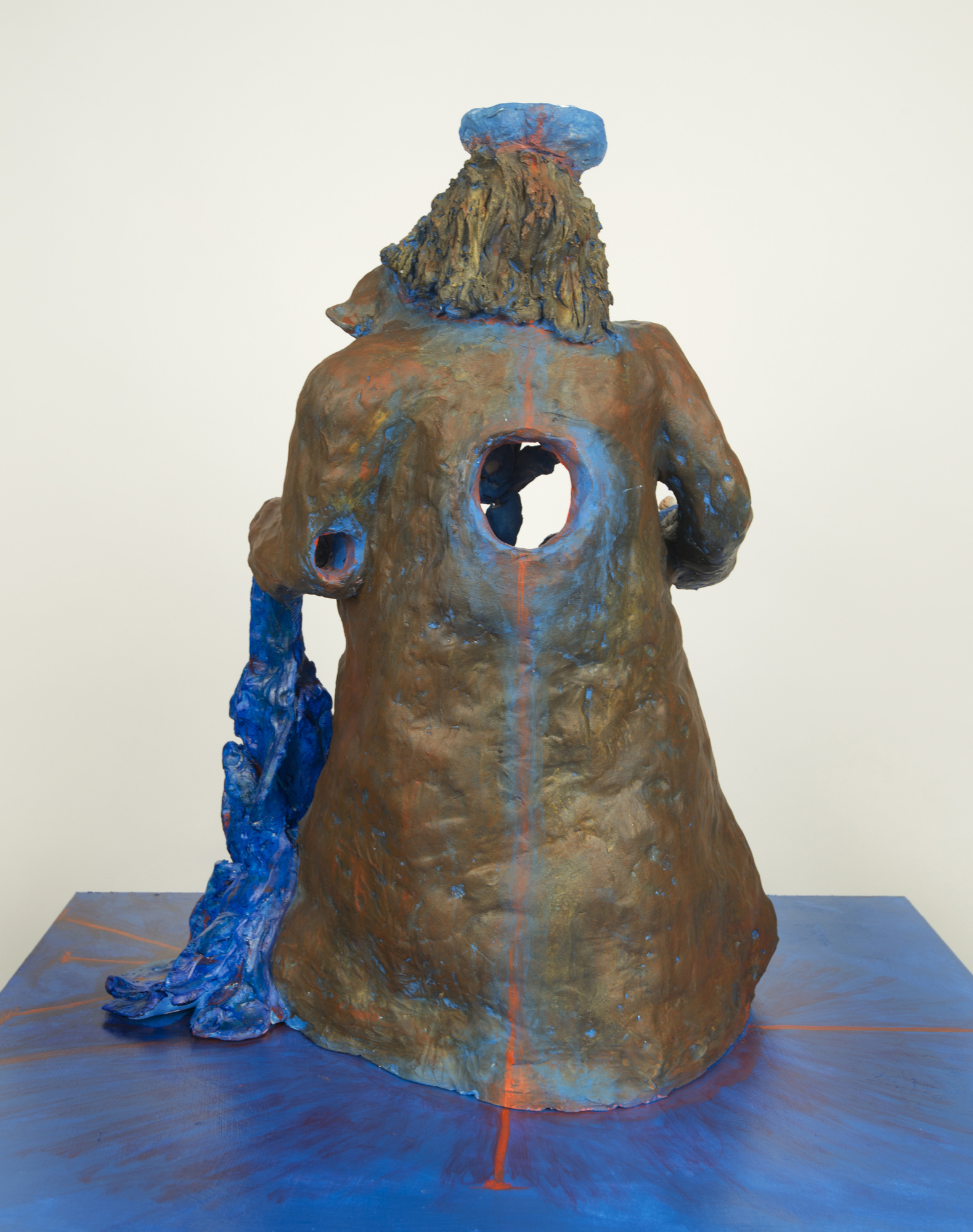
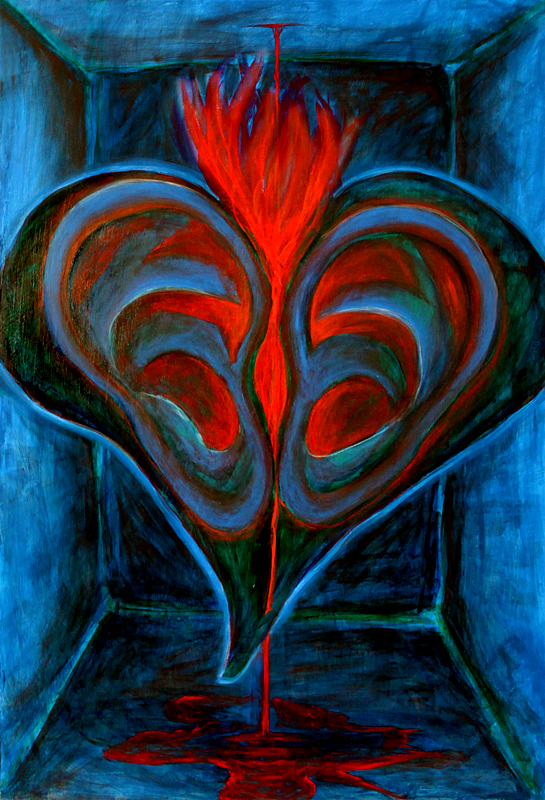
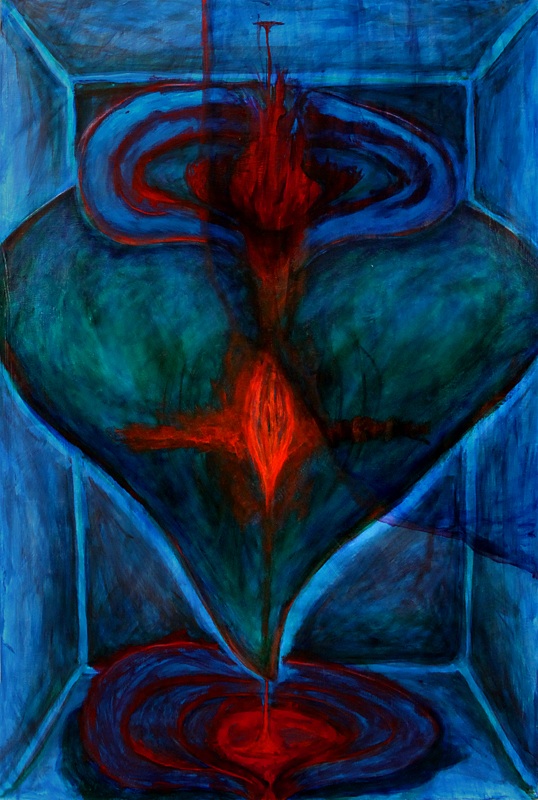
On Beethoven
Beethoven: Listening to God's Heartbeat
Sometimes I am so terribly tired of being sick, of laying in bed while other people take vacations and walks, while they go to shows and out to dinner. I feel like stone in a river while life rushes by me. I want to scream, to tear my hair out, to throw myself from a window and end this prisoner’s life. But then I think of my beautiful husband and son. I feel their deep and abiding love and I know I must soldier on. They make me remember what is good and why I am here. But there are some days I still wonder how am I supposed to go on.That's when I think of Beethoven. Beethoven who lost the world of sound so essential to a composer. Losing your hearing as a composer must be something like losing your sight as a painter: an unimaginable, potentially spirit killing loss. But it didn’t kill him. He endured his loss and many other ailments to produce music that is filled with Light, not clothed in the darkness of his illness. His music heals and lifts up its listeners. It surrounds, embraces, and fills us with love. But he had to transcend his pain to get there. In a letter to his brother, he wrote that his hearing loss:
… brought me to the verge of desperation, and well-nigh caused me to put an end to my life. Art! art alone deterred me. Ah! how could I possibly quit the world before bringing forth all that I felt it was my vocation to produce? And thus I spared this miserable life — so utterly miserable that any sudden change may reduce me at any moment from my best condition into the worst. It is decreed that I must now choose Patience for my guide! … This is no slight trial, and more severe on an artist than on any one else. God looks into my heart, He searches it, and knows that love for man and feelings of benevolence have their abode there! Oh! ye who may one day read this, … , and let any one similarly afflicted be consoled, by finding one like himself, who, in defiance of all the obstacles of Nature, has done all in his power to be included in the ranks of estimable artists and men. Beethoven’s Letters (1790-1826), translated by Lady Wallace, pp. 45
His art is what kept him going through all the darkness. I understand because art also keeps me going. Beethoven is an exemplar to all struggling artists. He inspires me to keep going. My sculpture, praises his great efforts and perseverance in the face of such enormous limitations. In my dark and desperate times I think, someone stayed the course and brought Light from darkness, maybe I can too.Sometimes I wonder if Beethoven needed his illness to produce the work he did. He listened through unstoppable ear ringing blocking out the world and heard deep and true silence. In that silence, he heard God’s heartbeat and translated it for the human ear.This accomplishment of Beethoven's is my goal too. Art is my way of seeking the Divine. By journeying toward the source of all creativity, I hope to leave tracks for others to follow as Beethoven did. Any contact with the "Divine Artist", touches the deep well of generative creativity that cannot help but be healing. My greatest desire is to create art that is healing for its viewers. To heal through art is a lofty goal that I may never reach, but Beethoven spurs me on in art and life. When I paint or sculpt, I find all my feelings of despair evaporate and there is only now, this present moment where everything is good and I am. Bless you Beethoven where ever you are.
Dorothy Walters, Poet
I am speechless with excitement because I just discovered that one of my favorite poets, Dorothy Walters, has her own blog: Kundalini Splendor. It is filled with beauty and wisdom just like her poetry. Walter's work inspires and feeds me on a deep level. Take for instance this poem, which tells the story of my life:
A Cloth of Fine Gold
You may thinkthat first lit flame
was the ultimate blaze,
the holy fire revealed.What do you know
of furnaces?This is a sun that returns
again and again, refining, igniting,
pouring your spirit
through a cloth of delicate gold
until all dross is taken
and you are sweet as
clarified butter
in god/the goddess’ mouth.
-Dorothy Walters
She intimately understands the relationship between Creator and creator. This next poem pinpoints my experience of my own vision of the Virgin Mary, my Annunciation, and my ensuing illness:
Preparing to Meet the Goddess
Do not think of her
unless you are prepared
to be driven to your limits,
to rush forth from yourself
like a ritual bowl overflowing
with sacramental wine.Do not summon her image
unless you are ready to be blinded,
to stand in the flash
of a center exploding,yourself shattering into the landscape,
wavering bits of bark and water.Do not speak her name
until you have said good-bye
to all your familiar trinkets --your mirrors, your bracelets,
your childhood adorations --From now on you are nothing,
a ghost sighing at the window,
a voice singing under water.
-Dorothy Walters
These poems make clear the paradox of the terrible rending of life that is at the same time a beautiful gift, like the healing wounds of the stigmata.Our job is, like alchemists, to heal and rarify matter. We are made for that nexus point where Creator & creator merge into One. Where Spirit infuses matter, where Light penetrates dark, and where we embrace our status as scared wombs born to give birth to the Divine.
I saw Copying Beethoven this weekend. I highly recommend it as a movie that really explores the spiritual path of making art. Here is an excerpt which sums up what I have been saying here. I couldn't find a shorter cut, but check at about the 3 minute mark where Beethoven explains the spiritual purpose behind making music:
Here is the direct link for email subscribers: http://www.youtube.com/watch?v=7PSyxwaTICs&feature=related
Blessings.Sybil
On Clay
Clays are extraordinary, layered, crystal structures which have, built into them, what amounts almost to an innate tendency to evolve...Clay has plans.-Lyall Watson, from An Introduction to Clay Colloid Chemistry

I started as an artist at the age of 6 in clay. The altars (images below) I built from clay I dug directly out of the earth are some of the most satisfying pieces of my career. There is an innate connection between God and earth. Clay is a meeting place, a doorway to Heaven.I have been an avid gardener for years. I began to garden for the fragrance and color of flowers but now I garden for soil. It is easy to miss the Divine is the humble trappings of dirt. There is something about soil that is just afire with the light of God. It is the lowliest of things, we tread on it, ignore it, sweep it away, and yet it sustains us all. The soil pulses with life that we cannot or will not see. There is no more satisfying feeling than seeing what appears to be a barren, wormless plot of land transform into a teaming mecca of life.
Working with clay gives me the same satisfaction. Clay itself is very dense, like the material word itself. It takes effort to move it and to see in it the true reflection of the Divine. And yet it is responsive. There is something in clay that wants to grow and transform and which responds to that same impulse within the artist. Clay is a partner in the creative act, not a submissive servant.In the biblical story of the creation of man, God chooses to blow the breath of life into clay to create Adam. I have discussed this from the perspective of the gilder who must use breath, but the clay’s perspective is just as interesting.
That God chose clay to receive his direct kiss, should illuminate the central importance of Earth. By gardening or working with clay we engage the Earth. And if we empty ourselves and enter fully into the present moment something amazing happens. The artist becomes the physical vessel for Divine creative energy, holding it, that it may be translated into, fused with matter. The particular way in which an artist engages matter allows for greater concentrations of Macrocosmic energy to enter the world.But that is not all. All matter, to a greater or lesser degree has consciousness of its Source. Clay is like a sponge that actively seeks to draw in Divine fecund energy. It and Earth itself has its own active spirituality and deep connection to God.Contemporary theologian Thomas Berry argues this persuasively.
There is a spiritual capacity in carbon as there is a carbon component functioning in our highest spiritual experience. If some scientists consider that all this is merely a material process, then what they call matter, I call mind, soul, spirit, or consciousness. Possibly it is a question of terminology, since scientists too on occasion use terms that express awe and mystery. Most often, perhaps, they use the expression that some of the natural forms they encounter seem to be "telling them something".- Thomas Berry, The Great Work: Our Way into the Future, Page: 25
He also says:
“Gardening is an active participation in the deepest mysteries of the universe.”
Medieval theologian St. Thomas Aquinas wrote that
All things love God. All things are united according to friendship to each other and to God.
And mystics such as Teilhard de Chardin and Hildegard of Bingen see it everywhere:
Crimson gleams of Matter, gliding imperceptibly into thegold of Spirit, ultimately to become transformed into theincandescence of a universe that is person- and through all of this there blows, animating it and spreading over it a fragrant balm, a zephyr of union- and of the Feminine.The diaphany of the Divine at the heart of a glowing universe, as I have experienced it through contact with the earth- the divine radiating from depths of blazing matter.-Teilhard de Chardin
Hildegard of Bingen says:
God’s Word is in all creation, visible and invisible. The WORD is living, being, spirit, all verdant greening, all creativity. All creation is awakened, called, by the resounding melody, God’s invocation of the WORD. This WORD manifests in every creature. Now this is how the spirit is in the flesh--the WORD is indivisible from God.
Eden, 22k gold leaf and handmade paints on sheep skin parchment
So let us not discount the importance of our physicality and out Earth in a reckless attempt to find a higher spirituality. Spirit is not up there, it here in every atom and molecule, every glowing and vibrant speck of dust. Let us be present and embrace the bounty God has offered us by entering into the unceasing flow of Divine Creativity on Earth. By embracing the Earth we embrace the Divine.
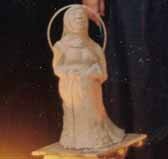
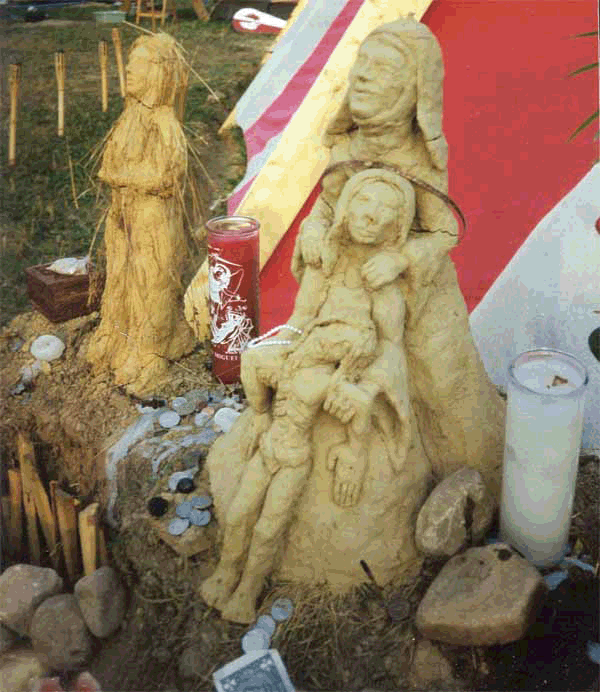
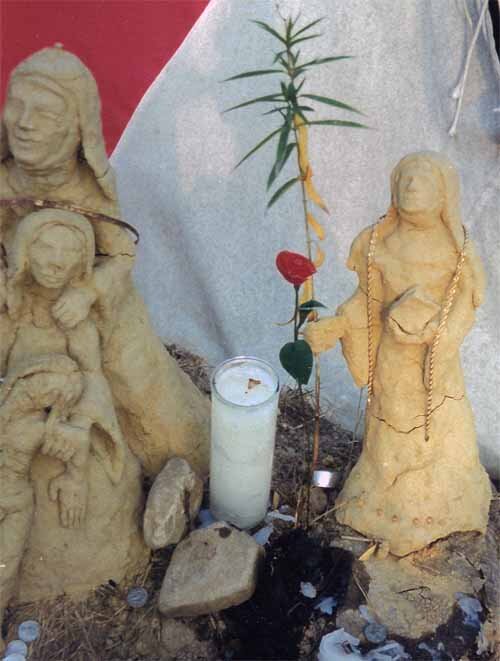
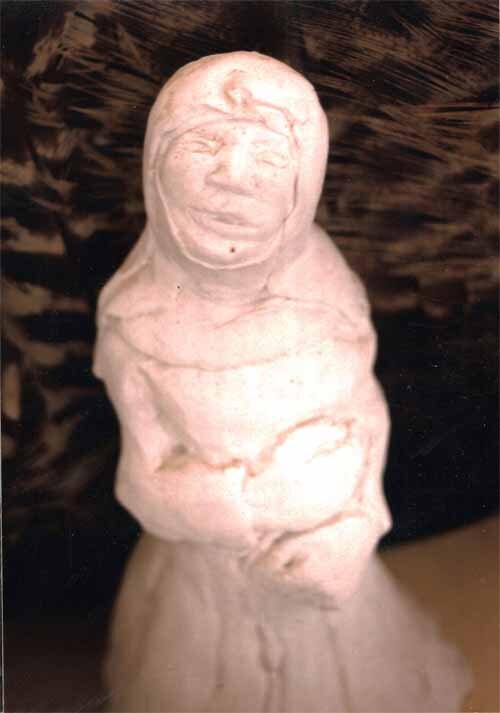
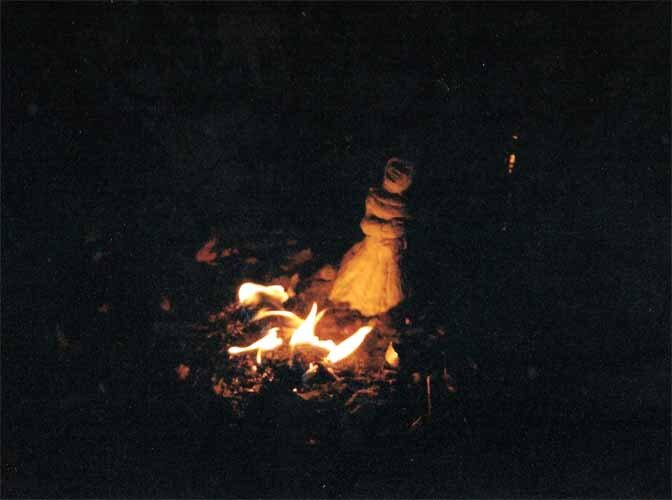
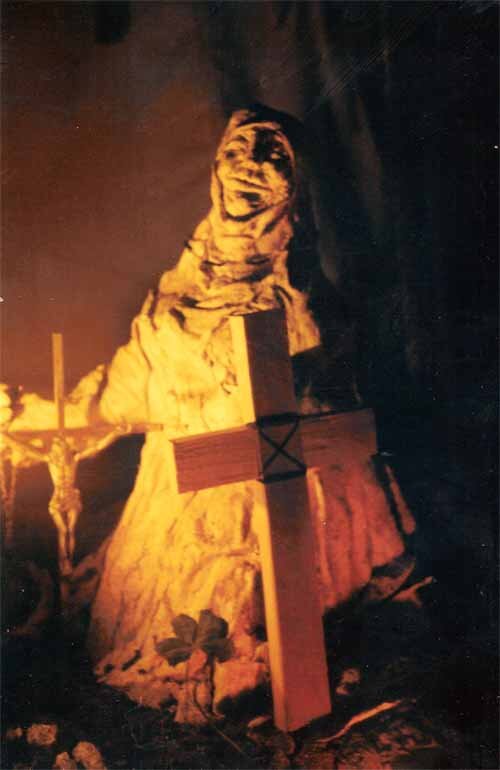
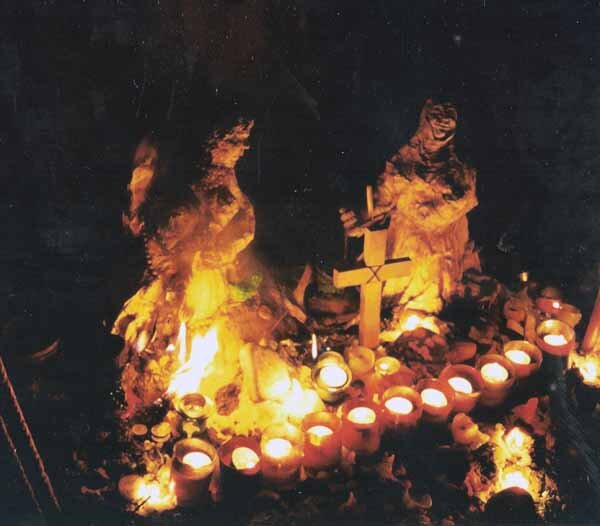
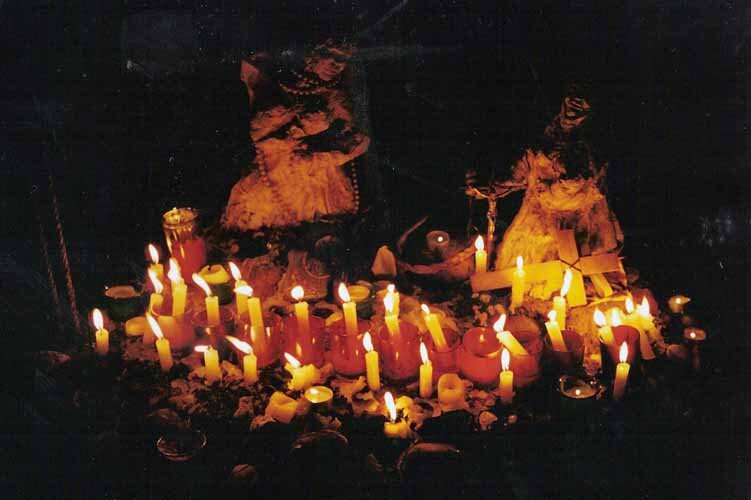
The Virgin Mary as Artist's Exemplar
Post Updated: I've bumped up this post from last month because I added photos of the sculpture it inspired at the end.This poem by Thomas Merton is, perhaps, the most beautiful and moving Mary poem I have ever read:
The Blessed Virgin Mary Compared to a Window
Because my will is simple as a windowAnd knows no pride of original birth,
It is my life to die, like glass, by light:
Slain in the strong rays of the bridegroom sun.Because my love is simple as a window
And knows no shame of original dust,
I longed all night, (when I was visible) for dawn my death:
When I would marry day, my Holy Spirit:
And die by transsubstantiation into light.For light, my lover, steals my life in secret.
I vanish into day, and leave no shadow
But the geometry of my cross,
Whose frame and structure are the strength
By which I die, but only to the earth,
And am uplifted to the sky my life.When I became the substance of my lover,
(Being obedient, sinless glass)
I love all things that need my lover’s life,
And live to give my newborn Morning to your quiet rooms,
-Your rooms, that would be tombs,
Or vaults of night, and death, and terror,
Fill with the clarity of living Heaven,
Shine with the rays of God’s Jerusalem:
O shine, bright Sions!Because I die by brightness and the Holy Spirit,
The sun rejoices in your jail, my kneeling Christian,
(Where even now you weep and grin
To learn, from my simplicity, the strength of faith).Therefore do not be troubled at the judgements of the thunder,
Stay still and pray, still stay, my other son,
And do not fear the armies and black ramparts
Of the advancing and retreating rains:
I’ll let no lightning kill your room’s white order.Although it is the day’s last hour,
Look with no fear:
For the torn storm lets in, at the world’s rim,
Three streaming rays as straight as Jacob’s ladder:And you shall see the sun, my Son, my Substance,
Come to convince the world of the day’s end, and of the night,
Smile to the lovers of the day in smiles of blood;
For though my love, He’ll be their Brother,My light – the Lamb of their Apocalypse.
-Thomas Merton- 1944
I feel this poem physically. It engages my spirit, my mind and my body. I can not put words to the way this moves me.I am devoted the Virgin Mary on many levels, but today I will talk about Mary as Womb, the physical location of creation. As pure Vessel for God’s Light, she is the ultimate exemplar for the artist. Just as Franciscan monks in the Middle Ages sought to imitate Christ as a spiritual path, so the artist must seek to emulate, in however imperfect a way, the path illuminated by Mother Mary. Merton describes her state:
"It is my life to die, like glass, by light:"
and
“When I became the substance of my lover,(Being obedient, sinless glass)I love all things that need my lover's life,And live to give my newborn Morning to your quiet rooms, “
The artist must strive to be empty, to be clear of "self", to become wholly filled with the fecund stream of Divine Creativity. Then this endless wellspring is constantly seeking to pour through the artist so that it may be joined with matter in the act of making art. This is the artist's sacred duty, channeling Above into below. (I written a lot about this see the "Making Art Category" of this blog for more.)This poem also tells us that true union and emptiness come without fear. Translated for the artist: true creation, without trying control Creative energy but in partnership with it, provides a release from creation anxiety and fear. It is the process of trying to control that creates fear. The artist must become, as Merton so beautifully describes "like glass". This is something I am beginning to know again after many years of intense creation anxiety.
Therefore do not be troubled at the judgments of the thunder,
Stay still and pray, still stay, my other son,
And do not fear the armies and black rampart
sOf the advancing and retreating rains:
I'll let no lightning kill your room's white order.
I am so grateful for this poem. Any poets out there, keep writing and take heart. Poems can transform lives.This sculpture was inspired by this post and visa versa. These are photos of it in process. I'll post more after it has been fired and glazed.Thanks for looking!
Freedom in the Studio
Oh Sweet Irrational Worship
Wind and a bobwhite
And the afternoon sun.
By ceasing to question the sun
I have become light,
Bird and wind.
My leaves sing.
I am earth, earth
All these lighted things
Grow from my heart.
A tall, spare pine
Stands like the initial of my first
Name when I had one.
When I had a spirit,
When I was on fire
When this valley was
Made out of fresh air
You spoke my name
In naming Your silence:
O sweet, irrational worship!
I am earth, earth
My heart's love
Bursts with hay and flowers.
I am a lake of blue air
In which my own appointed place
Field and valley
Stand reflected.
I am earth, earth
Out of my grass heart
Rises the bobwhite.
Out of my nameless weeds
His foolish worship.
.-Thomas Merton
I had an amazing day at the studio! I was totally inspired by the video I posted yesterday. I realized that there is still a part of that edits my artwork in an effort to please people. I am sensitive to the fact that an image maybe too shocking, too unfinished, too too…. I never understood this before, and I see that I am unconsciously trying to control the way Divine Creativity flows through me.So talking Vanessa Hildary as my exemplar, I drowned out my judging thoughts. I took other people out of the equation and just worked on a group of clay sketches. Quick and fun and totally, totally freeing. I’ll post some photos soon. I didn’t have my camera with me. I can’t tell you the last time I enjoyed myself so much!
On the Courage to be Yourself
Debra Ann over at Tangled Stitch had a recent post about accepting yourself that really got me thinking. Here she is talking about Thomas Moore's Dark Nights of the Soul:
Well I am up to the chapter on Temporary Insanities and I think this is the chapter that best describes me at this time in my life. I have to decide whether I am willing to accept the eccentricities of myself or whether I am going to hide them. This one sentence made me cry" Without the zany persona, you might be condemned to darkness, and that would be a tragedy". End quote first paragraph Page 259.
I got to thinking about how much I modify myself to please others and how it shuts down my creative process. Then a friend sent me the inspiring video below of Vanessa Hidary "The Hebrew Mamita". I find that I can't stop thinking about it. The video is a little off my main topic in subject matter (confronting prejudices), but bear with me. It's more than just the importance of confronting prejudice. Hidary displays a radical acceptance of herself, an absolute and fearless facing of who she. And she defiantly displays it to the world. Her abandon is truly breath taking and courageous. It's an inspiration. Watch this and imagine if you felt this way about yourself what kind of work you would allow yourself to make; what kind of nourishment you would provide the world.
A Creative Being
A Creative Being
Mary Caroline Richards
We have to believe that a creative being lives within ourselves whether we like it or not, and that we must get out of its way, for it will give us no peace until we do.
Source: Centering in Pottery, Poetry and the Person
I'm going to have to get this book! I received this quote through an email from Inward/Outward. I also the love email newsletters of the Henri Nouwen Society and the Center for Contemplative Action (Richard Rohr).
Hildegard of Bingen: Illness and Creative Purpose
Update: Unfortunately this video has disappeared, but I encourage you to google Matthew Fox and Hildegard if you would luike to learn more. The video is not necessary to read this essay>
During the first part of this video, I was close to tears. I’ve written about my deep connection to Hildegard’s life before. In college, I even made a pilgrimage to Bingen to visit Hildgard’s bones and the corner of earth where she lived. Fox starts with pictures of the places of her life, places I visited and then goes on to her illness and her awakening at the age of 41 or 42. I am close to turning 41 and have dealt with dramatic & debilitating illness for many years. There are obvious parallels and it hit me forcibly that Hildegard’s life is an exemplar for my own. Not that I could attain her genius and connection to the Divine, but I could attain her commitment to her creativity process, her respect and love of the physical world and possibly even a reprieve from illness although not necessarily how you may be imagining.I have no expectation of my illness being lifted from me, but I do have hope. And this is, perhaps, why this video effected me so profoundly. I do have evidence that making art heals me. See here and here. But more than that, I have felt art remove the idea of illness from my system. When I work illness disappears. I’m just there. I enter a state where illness simply does not exist. It is state of freedom where I can embrace my physical nature bur not be burdened by it.
Most of my life, the physical world has seemed a burden to me. Once a long time ago, I met an amazing fellow, a pagan jewelry maker and musician of the highest caliber. He said something to me that was so shocking to my system that it shifted everything for me. He said:
I love this earth, I love the pleasure, the pain, the fight, the food, the suffering.
He said it with such relish. It was clear that he really did love being a physical being. It never occurred to me that anyone would want to do anything else but escape Earth and leave physicality behind. From that moment I considered for the first time ever, embracing my life on Earth. My illness which has bestowed so many gifts, helped force my down to Earth as well. By leaving me with little strength, I could not occupy my time with a million little distractions. It was just me and my body learning to dance for the first time.Hildegard revived herself through her arts writing and painting, physical acts which channel Divine energy into the world. Throughout her work, she embraces nature and the Earth.
Oh greening branch.O greening branchO greening branch!You stand in your nobilityLike the rising dawn.Rejoice now and exultAnd deign to free the fools we are.From our long slavery to evilAnd hold out your handTo raise us up.-Hildegard of Bingen
This is just one example of how she sees God in nature and nature as part of God. It was Hildegard’s job to express this. God rushed through her like Niagara Falls, pouring into this Earth. This is what Victor Frankl has to say about our purpose in life. (He is speaking about is time in a Nazi Concentration camp.)
We had to learn and we had to teach the despairing men that it did not really matterwhat we expected from life, but rather what life expected from us. We needed to stopasking about the meaning of life, and think instead of ourselves as those who were beingquestioned by life—daily and hourly. Our answer must consist, not in talk and meditation,but in right action and in right conduct. What matters, therefore, is not the meaning oflife in general but rather the specific meaning of a person’s life at a given moment.Everyone has his own specific mission in life to carry out a concrete assignment, whichdemands fulfillment. -Victor Frankl, Man’s Search for Meaning (Thanks Alive on All Channels)
I have my assignment. Hildegard is my example. Create, create, create.
Mother, 22k gold leaf and handmade paints on sheep skin parchment
Elizabeth Gilbert on the Creative Process
This is unbelievably amazing and inspiring. I felt a tremendous weight lift off my shoulders as I watched:
On Perfection and Judgment
Perfection is not the elimination of imperfection. That’s our Western either/or, need-to-control thinking. Perfection, rather, is the ability to incorporate imperfection! There’s no other way to live: You either incorporate imperfection, or you fall into denial. That’s how the Spirit moves in or out of our lives. - Richard Rohr, Radical Grace: Daily Meditations, p. 228, day 237
Imagine how many more people would make art as a regular practice if they felt this way? How many people have judged themselves into abandoning a loved occupation?This happens because art often becomes about the finished product, not the process. This is process:
Midnight, no waves,
no wind, the empty boat
is flooded with moonlight
.-Dogen
Watch this funny video:
Happy New Year from Art of the Spirit

The Fountain
How well I know that flowing spring
in black of night.
The eternal fountain is unseen.
How well I know where she has been
in black of night.
I do not know her origin.
None. Yet in her all things begin
in black of night.
I know that nothing is so fair
and earth and firmament drink there
in black of night.
I know that none can wade inside
to find her bright bottomless tide
in black of night.
Her shining never has a blur;
I know that all light comes from her
in black of night.
I know her streams converge and swell
and nourish people, skies and hell
in black of night.
The stream whose birth is in this source
I know has a gigantic force
in black of night.
The stream from but these two proceeds
yet neither one, I know, precedes
in black of night.
The eternal fountain is unseen
in living bread that gives us being
in black of night.
She calls on all mankind to start
to drink her water, though in dark,
for black is night.
O living fountain that I crave,
in bread of life I see her flame
in black of night.
St. John of the Cross
Wow!I leave you with the beautiful poem describing the fecund stream of Divine Creativity. (And he describes it in feminine terms!)My wish for you for the New Year: May you be blessed with deep connection to this stream, may your life and work abound with creativity, growth and love.Thanks for reading this year. See you in 2008!-----------------------------I don't believe in luck, but I'm going with this anyway! 8 is considered an extremely lucky number in China so this is going to be a very lucky year. (Every little bit helps, right?)
St. John of the Cross & the Artist
Of the Divine Word
Pregnant with the holy
Word will come the Virgin
Walking down the road
If you will take her in.
This beautiful poem is a road map for what a spiritual artist must do to hook into the flow of Divine creativity. The fundamentally creative nature of the Universe is represented here as the pregnant Virgin. Her pregnancy is physical creativity in potentiality. Her virginity is the state of her mind and soul; it has nothing to do with her sexuality. The pregnant Mary instructs us on how to make ourselves ready to receive the creative spirit. We must make ourselves as virgin ground, unstamped by the traumas & desires of life. We must be open and hold ourselves empty in order to be filled. St John reminds us that this is all that is necessary for the Divine to enter into us. It is the nature of the Divine to create, or as Plotinus would say, to emanate form. If we allow the Divine in, our own creative output is assured and, more importantly, sacred. It is the moment of creation, the intimacy an artist can feel with God that is the object. It is that union, which without effort, spontaneously produces the form which will be come a physical work of art. What's more, art that is produced in this way captures the resonance of that experience and can, on some level, transmit some of that energy to its viewer. This is the ideal that the spiritual artist must continually strive for.

